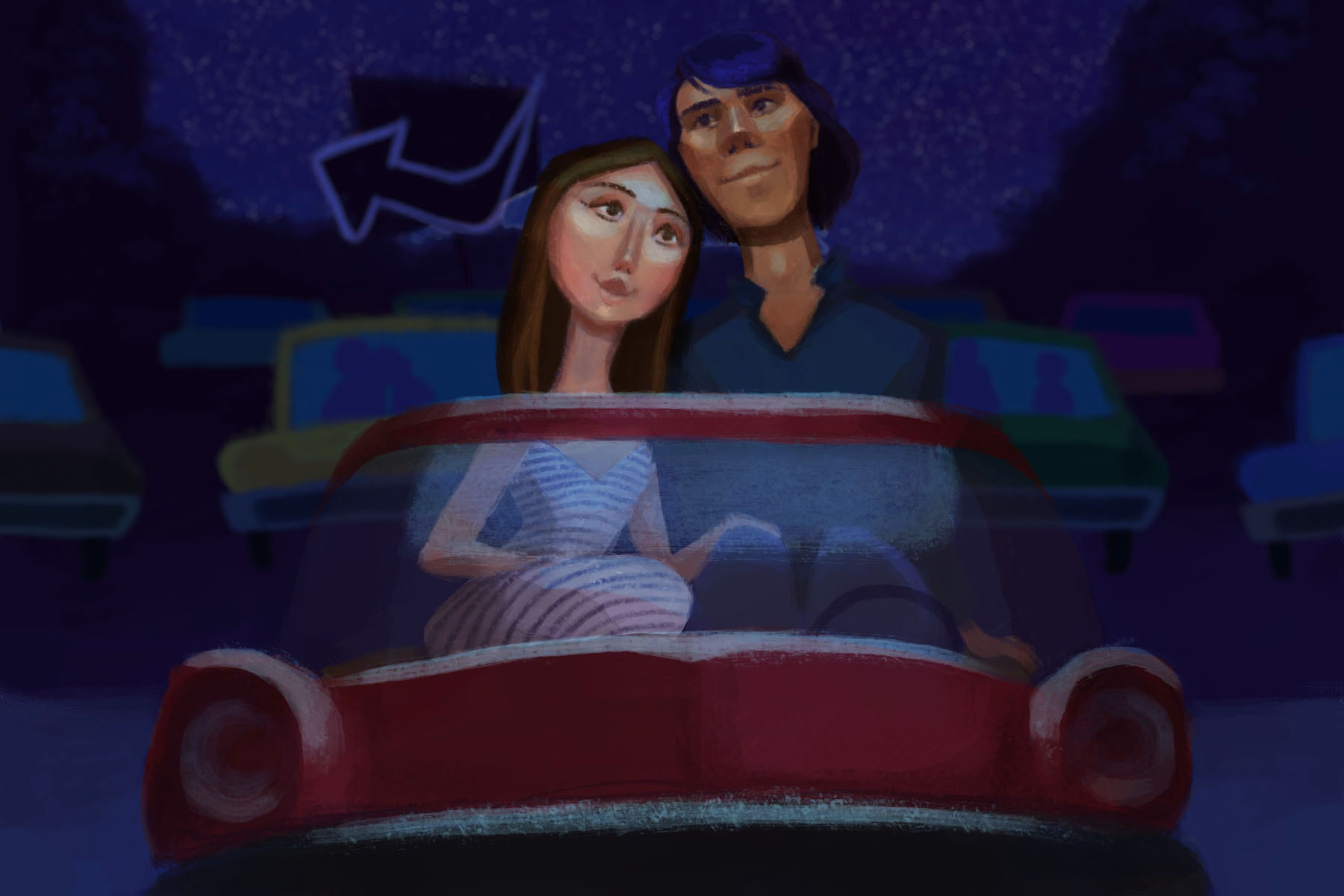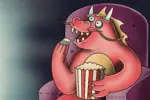We’ve all seen those cute old movies where a teenage couple goes to a drive-in theater on their first date. The boy is wearing his red or blue varsity jacket because, of course, he plays football. The girl is wearing a pink bow in her blonde hair, and her favorite class is probably statistics.
You may be able to experience this scene in real life. With many businesses and restaurants closed, drive-in movie theaters appear to be making a comeback.
Other than being one of the only things open, the appeal of drive-in theaters is the comfort of being in your own car. Vehicles are typically parked six feet away from each other, complying with social distancing recommendations. Families, teenagers, children and anyone else attending are able to have fun, watch a movie and stay safe.
Schuyler Moore, an entertainment attorney at Greenberg Glusker, said to FOX Business that drive-in theaters give people the chance to get out of the house.
“For most audiences right now, this is a lot more preferable than being packed in a confined, public space with dozens of other people,” Moore said.
Drive-ins are also essential for business owners to get creative in earning money, and this rebirth has made this possible.
For instance, the Dezerland Park in Miami, Florida closed because of the pandemic. However, they have opened a drive-in theater in their parking lot, showing films such as “The Lion King.”
Ballpark Commons, a baseball stadium in Wisconsin, opened a theater last May called the Milky Way Drive-in. Now, they show movies every night on their massive LED flat-screen.
The Artisan Plaza and Winery in Oregon has also established a drive-in theater for the summer, showing films every Friday and Saturday.
Before taking precautions related to COVID-19, drive-ins were not how individuals chose to spend a night out. It seemed as though the main reason behind people going to drive-ins was the nostalgic feeling. According to a Quora user, drive-ins are a “walk down memory lane.”
The first time I went to a drive-in theater was with my close friend last summer. We went to Weirs Drive-In, located in New Hampshire and saw “Annabelle Comes Home.” Since this was pre-virus, my friend and I went to the snack bar and got popcorn and candy without any worries.
I loved it. It was a different scene and made me realize, “Oh, this is what my parents used to do on Friday nights.”
In the late 1950s, there were more than 4,000 drive-in theaters operating in the U.S., a time that was arguably the industry’s prime.
“They offered family entertainment,” Jim Kopp of the United States Drive-In Theatre Owners Association said to Smithsonian Magazine. “People could sit in their cars, they could bring their babies, they could smoke. Drive-ins offered more flexibility than indoor theaters.”
The first drive-in opened in 1933 under Richard Hollingshead, an auto-parts salesman, in Camden, New Jersey. He charged 25 cents per person and per car to watch the movie called “Wives Beware.”
Although showing movies outside wasn’t new, Hollingshead saw the genius in combining the love of cars and movies. He initially came up with this idea to solve a problem; typically, indoor movie theater seats did not accommodate larger individuals, like his mother.
Jim Kopp of the United Drive-in Theatre Owners Association explained how Hollingshead experimented with sheets tied to trees, a projector and with his mom in a car. Before opening, he created “a ramp system for cars to park at different heights so everyone could see the screen.” After patenting his concept in May of 1933, Hollingshead opened his theater the next month.
The second drive-in opening was a year later in Pennsylvania, then many others followed. By 1958, the number of drive-in theaters hit 4,063.
However, the truth of the matter is indoor theaters have more flexible schedules allowing for multiple showings a day. As a result, movie studios sent first-runs to indoor theatres.
Since the ‘50s, the number of drive-ins has consistently decreased. In 2019, there were only 321 left.
Other than high pricing of rural land, the decline of the drive-in theatres relates to the movement toward the mall society, John Stefanopoulos, manager of the Hudson Valley Four Brother’s Drive-In explained to FOX Business.
“More variety, the convenience of timing and shopping all in one and more focus on the movie itself rather than the experience was what the movie-goer demanded, and the mall society provided just that. Those social patterns caused drive-ins to close and give way, selling to the plazas we’ve grown to know today,” said Stefanopoulos.
Now, in Weirs Drive-In, the snack bar is no longer self-serve and there is a take-out window. Vehicles are parked every other space and it is recommended to wear a mask anytime you leave your car. Because of the pandemic, it is a bit different than when I went there last time.
Comfort and affordability were and are still benefits of drive-ins. Families and friends can still come together and bring their own popcorn, candy and soda.
Although more drive-ins have opened temporarily, Moore said he doesn’t think the drive-in industry can make a full comeback.
The land would be too expensive for urban areas to justify them, most people prefer the full movie-going experience and many will eventually forget about COVID-19, especially when theaters reopen with safety guidelines.
This may be discouraging news for movie-goers and old theater fanatics like myself.
However, this pandemic gives us a chance to convince our less-enthusiastic friends to go to a local drive-in and have a great time. Even with our mask on.

















